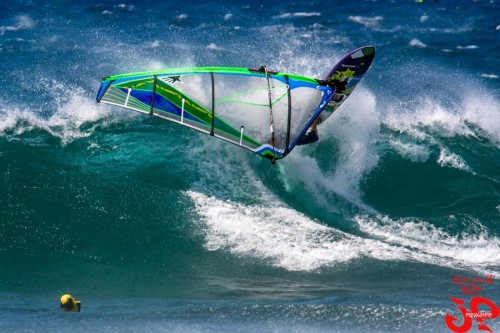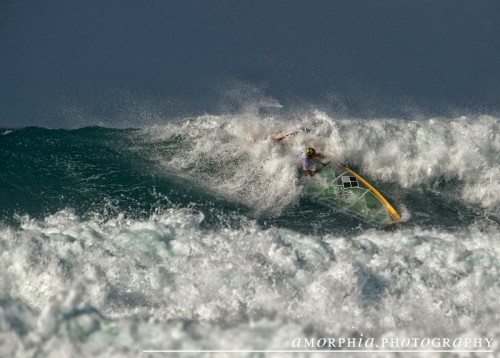The Importance of Crashes, Falls, and Wipeouts
by Graham
People ask me for windsurfing advice all the time. How to pushloop, how to tack, how to taka, etc. But nobody ever asks me how to fall.
“Huh?” I hear you asking, “Why would anyone need to learn how to fall?” Fall equals fail in the internet’s vernacular. Fails plaster the pages of online culture. A collection of oops! that the whole world watches, laughs at, and thanks their stars it happened to somebody else.
But falls are not fails– at least, not always. Falls, crashes, and wipeouts make learning possible and therefore are the opposite of a fail. Knowledge comes from the Falls.
I’m reminded of a piece I wrote for Windsport 3 years ago. Here is an edited version:
—-start—-
“Windsurfing is full of falling. Most people fall ten times before they even travel ten feet. And learning to jibe means falling a thousand times. At this rate, we could call the sport Fallsurfing.
When I set out to learn a move, I only have one plan: fall a lot. The quicker I want to learn a move, the more I have to fall. When I first started trying wave 360s, I’d try one on every wave of my session. This meant that I’d go home without having made a single move that day because I’d only tried 360s. That’s not fun at all.
But each next day, I completed more of the 360 rotation and projected farther in front of the wave before messing everything up and crashing. One day, after millions of falls, I landed my first wave 360 (I was so happy that I literally started laughing on the water). I would never have landed a 360 if I hadn’t fallen first. Each crash gave me a little bit more information on how to do the maneuver properly, so every failed wave 360 I had done was a part of my first successful wave 360. Moves cannot exist without first being wipeouts.
To most windsurfers, this probably seems obvious. They are thinking: “Who expects to land a back loop on the first try?” Yet, most of our culture does not allow for failure. One of my English professors confided in me that the hardest part of his job is getting kids to the point where they can write without expecting it to be perfect. Trying to write a flawless story on the first attempt is impossible and thus crippling. But writing a lot of stories regardless of whether they are good or bad will inevitably lead to improvement, and improvement guides one towards perfection (even if it is ultimately unattainable, everyone wants to get closer). My professor tries to teach falling to his students by assigning them nightly writing in a blog that no one will read. Maybe he should get them to windsurf.
Other sports like skateboarding also require much falling in order to improve, but windsurfing seems to be the kindest to falling. For one, water is a lot softer than cement or dirt. Most often just a splash in the water, a fall in windsurfing rarely means broken bones or deep cuts. Thus falls are mainly ego injuries and not physical ones. Further, the sport of windsurfing has an infinitely large number of moves to learn, so the falling never stops. Even the best wave and freestyle professional windsurfers in the world are constantly falling on new moves. Everyone, from the guy learning to jibe to Ricardo trying to land a triple forward, is falling.
Falling is the essence of life. Science requires multiple failures and trials before reaching an accurate result, and evolution relies on genetic mutations that create a varied spectrum of non-prefect animals, and from this variety only the ones with stronger genes survive. No one wants to write a shitty story and nobody wants to get slammed into the water mid forward loop, but these are necessary steps for getting better. In order to improve, you must fall. And the best way to learn to fall is to windsurf.”
—-end—-
The day you stop falling is the day you stop learning. Yet, HOW you fall matters.
When I was a teenager, I crashed so hard. On different occasions: I broke my left leg, my right wrist, and my right foot; I tore the tendons in my right shoulder; and, I needed dozens (or maybe even well over a hundred) stitches after collisions with rocks, reef, and fins.
I still crash hard–yes, I did knock out a tooth last summer– but I don’t crash nearly as hard as I used to. I attribute this to learning how to fall. Injuries are less likely if you are aware of your body position, the equipment’s position, and the forces of the wave at the time of the wipeout.
Given the importance of falling, maybe the best windsurfing tip I can give is to go out and just crash for a whole session. The more crashes you do, the more comfortable crashing becomes– making wipeouts safer and learning easier.
So, go out and crash.
—–
Next post will be Wednesday the 1st of May (all times are Hawaiian time).


[…] has some views about The Importance of Crashes, Falls and Wipeouts, you can read onhis […]
Interesting but there is no advice on HOW to crash. Maybe, nobody expects more or less clear answer is the reason no one asks how to crash
Tips on crashing would be ways to minimize the chance of injury. Here are some quick tips:
1) Hold on to the gear while keeping it at an arms distance. Often, letting go results in slamming into the sail, boom, or board. But, if you’re arm is under so much strain that it might break, you should probably let go.
2) NEVER let only 1 foot stay in the footstraps. Fight to keep both in. And if one comes out, fight like hell to take the other out.
3) When getting worked in the whitewater, cover your head and face with your arms to protect it.
thank you, Graham! It adds up to the article!
Remember to laugh when you fall.
Graham,
A+ on that wipeout. I also am quite good at the “wipeout”. My problem is not the wipeout itself, I have that down, but the post wipeout blues. My mast usually ends up pointing straight up wind making the waterstart difficult. I must decide which way to swim my mast around to get into the waterstart position before I get thumped by the next pitching wave.
With the lack of wind (in the break zone) and the ripping downwind current things usually turn ugly at this point.
Any advice?
Hmmm… if the mast points directly into the wind: rather than try to turn the sail, swim quickly to the tip of the mast and lift it. Now, shimmy down the sail to the boom. As you do so, the sail should align itself correctly as it fills with wind. That’s what I’d do.
Or, turn the rig in the direction of the current. In the fight between you and a current, bet on the current.
I did Judo as a kid, and whilst I enjoyed it, it wasn’t the be-all and end-all of my life. However I credit it with one thing that has saved my skin time and time again – learning how to fall. Learning how to fall is the first thing you learn, and you learn it and do it every single session.
20 years of having skin in the game and I’ve lost very little of it. If you can crash it, I have crashed it. Windsurfing, snowboarding, skateboarding and mountain biking. That’s thanks to a lot of luck and the instincts developed a long time ago through a kids’ Judo class.
To this day I don’t think my mum understands the importance of her decision to take me to Judo. Thanks Mum.
[…] Drog också av en framåtloop för styrbord på vägen in sista vändan. Även om ”falls are not fails”, så är det extra gött att få landa och köra vidare!Dags för pass 2! Filip var lite snabbare […]